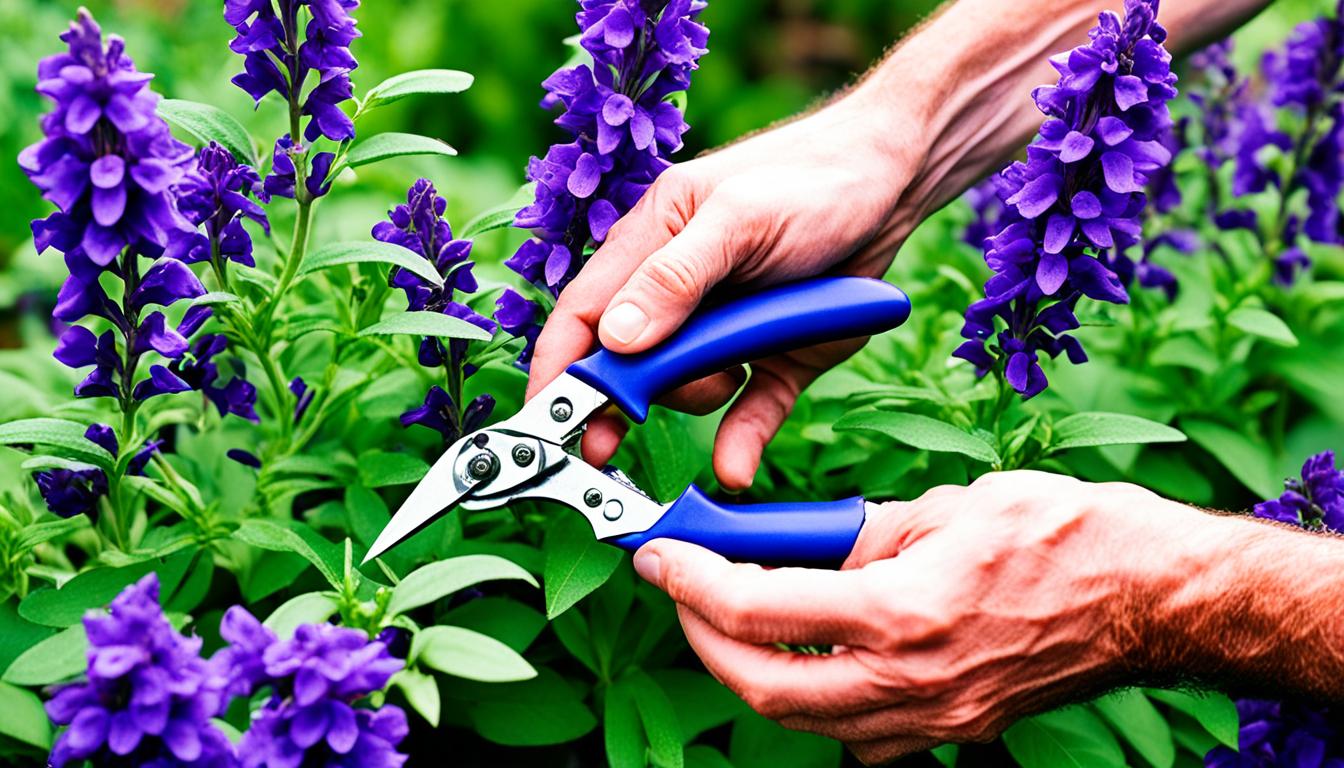I love the vibrant and fragrant salvias that brighten many gardens in the U.S. These plants come in many forms, like herbaceous perennials and woody shrubs. Each type has its own pruning needs. In this guide, I’ll show you how to prune salvias in summer to keep them healthy and full of blooms.
Salvias are a favorite in gardens, fitting into many styles from cottage to modern. They need proper pruning to stay vibrant, bloom well, and stay healthy. By following the simple steps here, you’ll keep your salvias looking great all summer.
Why Pruning Salvias is Important
Pruning salvias is key for their health and looks. Trimming them helps remove old flowers, boost new growth, and stop them from getting too big. This keeps your salvias looking great and makes them bloom more, giving you flowers all season.
Maintains Plant Health and Appearance
Pruning salvias is vital for their health. It gets rid of damaged, sick, or dead leaves, helping the plant focus on growing strong and healthy. Plus, it makes them grow in a neat shape, keeping your garden tidy.
Encourages Prolific Blooming
Salvias are known for blooming a lot, and pruning helps a lot with this. Cutting off old flowers tells the plant to make more new ones. This means you get to enjoy their beautiful colors and leaves for longer.
| Importance of Pruning Salvias | Benefits |
|---|---|
| Maintains Plant Health and Appearance |
|
| Encourages Prolific Blooming |
|
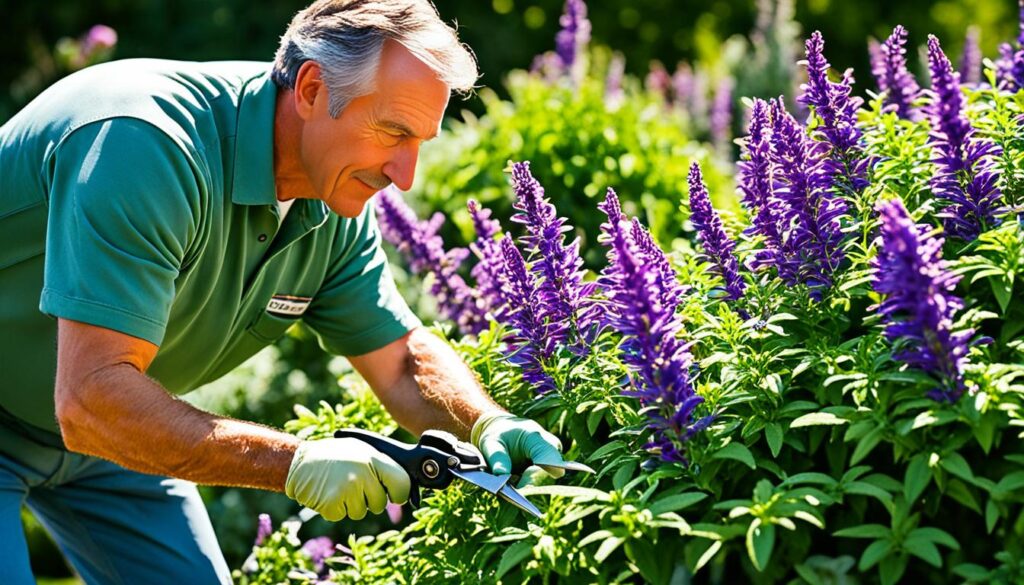
Understanding how to prune salvias helps keep them healthy and looking good. It also makes sure they bloom a lot. The tips for basil plants can also help with salvias.
How to Prune Deciduous Herbaceous Salvias
If you have deciduous herbaceous salvias like Salvia elegans, Salvia guaranitica, or Salvia leucantha, pruning them is a bit special. These salvias have soft stems that die off or freeze back in winter. Prune them in the spring, when the old growth protects the new growth.
After they stop blooming, cut the stems all the way down to the ground. This lets new growth come from the base of the plant. By spring pruning, you help the plant focus on growing strong, healthy foliage and flowers.
Timing is everything when pruning deciduous herbaceous salvias. Do it in the spring, when new growth starts. This keeps your plants looking great and encourages lots of blooms in the warmer months.
Pruning Tips for Herbaceous Salvias
- Cut spent stems down to the ground after flowering is complete.
- Time your pruning for early spring, as the new growth begins to appear.
- Avoid pruning in the fall or winter, as this can leave the plant vulnerable to cold damage.
- Use clean, sharp pruners to make clean cuts and prevent disease.
- Compost the pruned material, as it can be an excellent addition to your garden’s soil.
Follow these easy steps to keep your how to prune deciduous herbaceous salvias, pruning tips for herbaceous salvias, and salvias with soft stems pruning looking great all season.
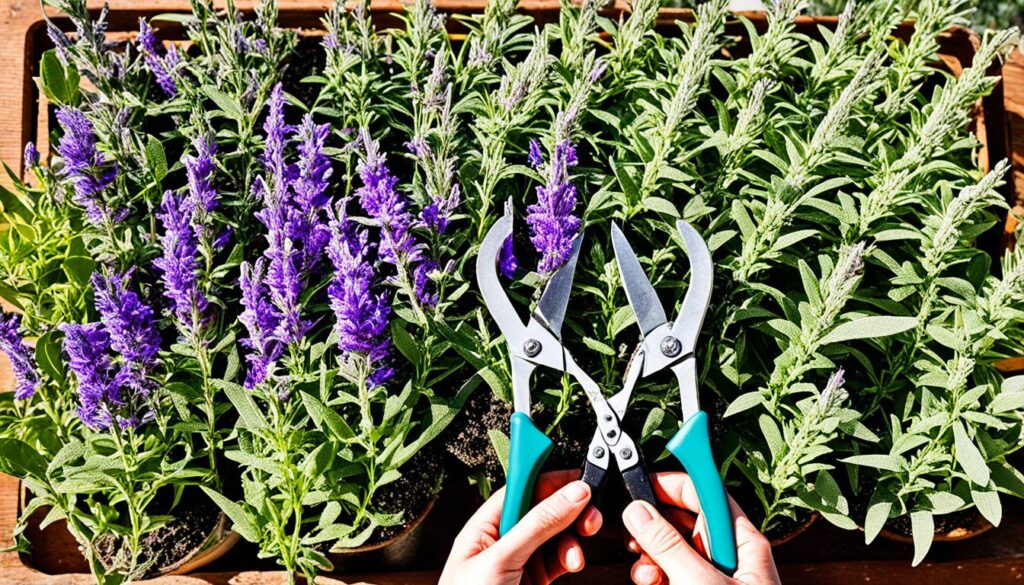
Pruning Herbaceous Salvias with Woody Stems
Pruning salvias with woody stems, like Salvia greggii, Salvia chamaedryoides, and Salvia microphylla, needs a special touch. After they bloom, cut them back but don’t cut them all the way down. Cut the stems where the first set of leaves starts on the flower stems. This helps thin out the plant and shape it nicely.
Don’t cut these salvias too much, or they might not recover and bloom well next year. Proper pruning keeps the plant healthy and encourages lots of flowers all season.
- Prune shrubby salvias like Salvia greggii and Salvia chamaedryoides after they bloom, cutting the stems back to the first set of leaves
- Thin out the plant’s inside to improve air flow and make the shrub look good
- Avoid cutting the stems back too far, as this can stop the plant from recovering and blooming well
By following these pruning tips for herbaceous salvias with woody stems, gardeners can keep their plants healthy and blooming every year.
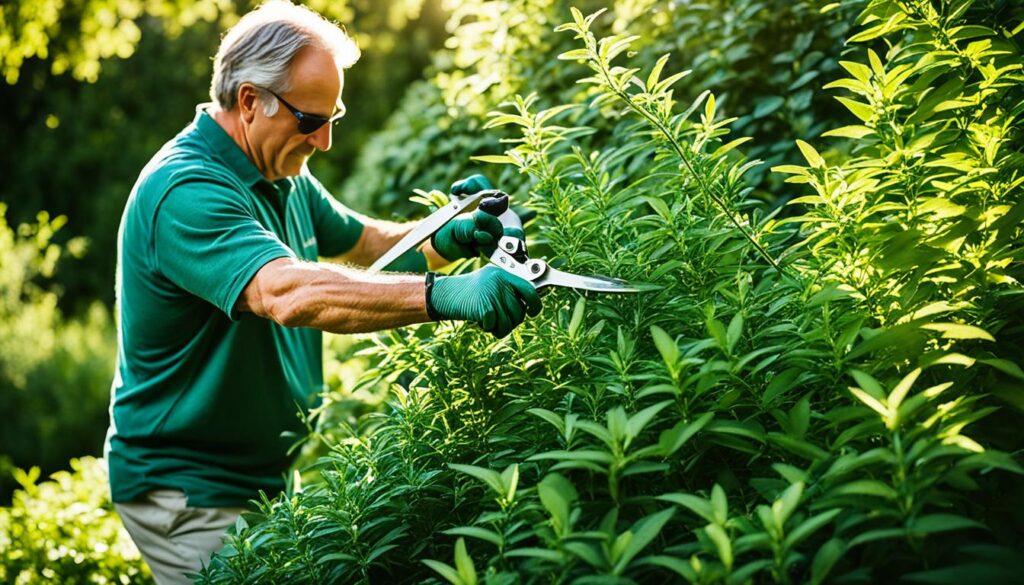
How to Prune Salvias in Summer
As summer gets warmer, it’s a great time to trim your salvias. Regular pruning helps them bloom more and stay neat. This keeps your garden colorful and tidy.
For salvias that lose their leaves in winter, cut off any dead flower spikes. This encourages more flowers to grow. Prune in the early morning or late afternoon to protect the plants from the heat.
For salvias with woody stems, like Autumn Sages, just trim the old flower stalks a bit. This makes the plant look neat and promotes new growth. But don’t cut too much, as it can stress the plant in the summer.
- Prune deciduous, herbaceous salvias by removing spent flower spikes
- Tidy up woody-stemmed salvias by snipping off old flower stalks
- Prune in the early morning or late afternoon to avoid stress during hot midday
- Don’t over-prune, as this can harm the plants in summer
By using these easy summer pruning tips, you can keep your salvias looking great. Whether they’re delicate or have sturdy stems, a little pruning helps them stay beautiful. This way, your salvias will bloom well all summer long.
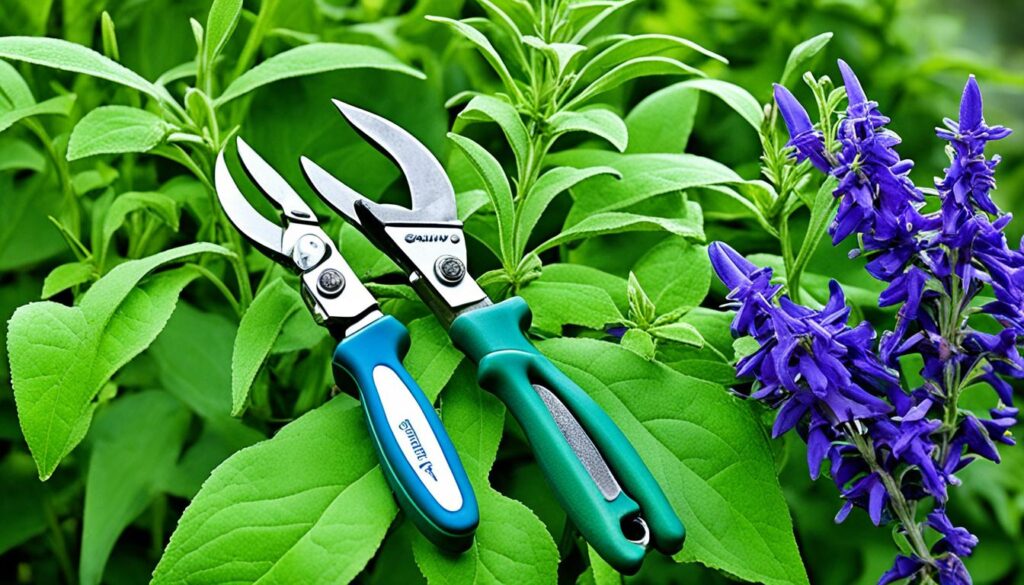
Conclusion
Proper pruning is key for salvias to stay healthy and look great in my garden. I learned that different salvias need different pruning. This knowledge helps my plants bloom more and stay colorful all season.
Pruning salvias does more than just make them look good. It also encourages new growth, fights disease, and makes them flower more. With clean, sharp pruners and the right techniques, I can keep my salvias thriving.
Adding these pruning tips to my garden care routine is a smart move. It ensures my salvias stay beautiful and healthy for many years. I’ll keep these pruning tips in mind to keep my garden looking its best.
FAQ
What are the main types of salvias and how do they differ in pruning requirements?
Salvias come in three main types: deciduous herbaceous, herbaceous with woody stems, and shrubby. Deciduous types have soft stems that die back in winter. Prune them in spring.
Herbaceous types with woody stems need pruning after they bloom. Cut stems back, but don’t cut them all the way to the ground. Shrubby salvias should be pruned to thin out the inside and shape the plant.
Why is pruning salvias important?
Pruning salvias keeps them healthy and looking good. It removes old flowers, encourages new growth, and stops the plants from getting too big. Regular pruning also makes them bloom more, giving you flowers all season.
When is the best time to prune deciduous herbaceous salvias?
Prune deciduous herbaceous salvias in spring. Cut the old growth to protect new stems for winter. Once they stop blooming, cut them all the way down to the ground.
How should herbaceous salvias with woody stems be pruned?
For salvias with woody stems, prune after they bloom but not too much. Cut stems back to where the first set of leaves starts. This thins out the plant and shapes it nicely.
When and how should salvias be pruned in summer?
In summer, prune salvias lightly to keep them looking good and blooming. For deciduous types, remove old flowers to encourage more blooms. For woody types, cut off old stems to tidy up and promote new growth. Don’t prune too much in the summer heat, as it can harm the plants.
